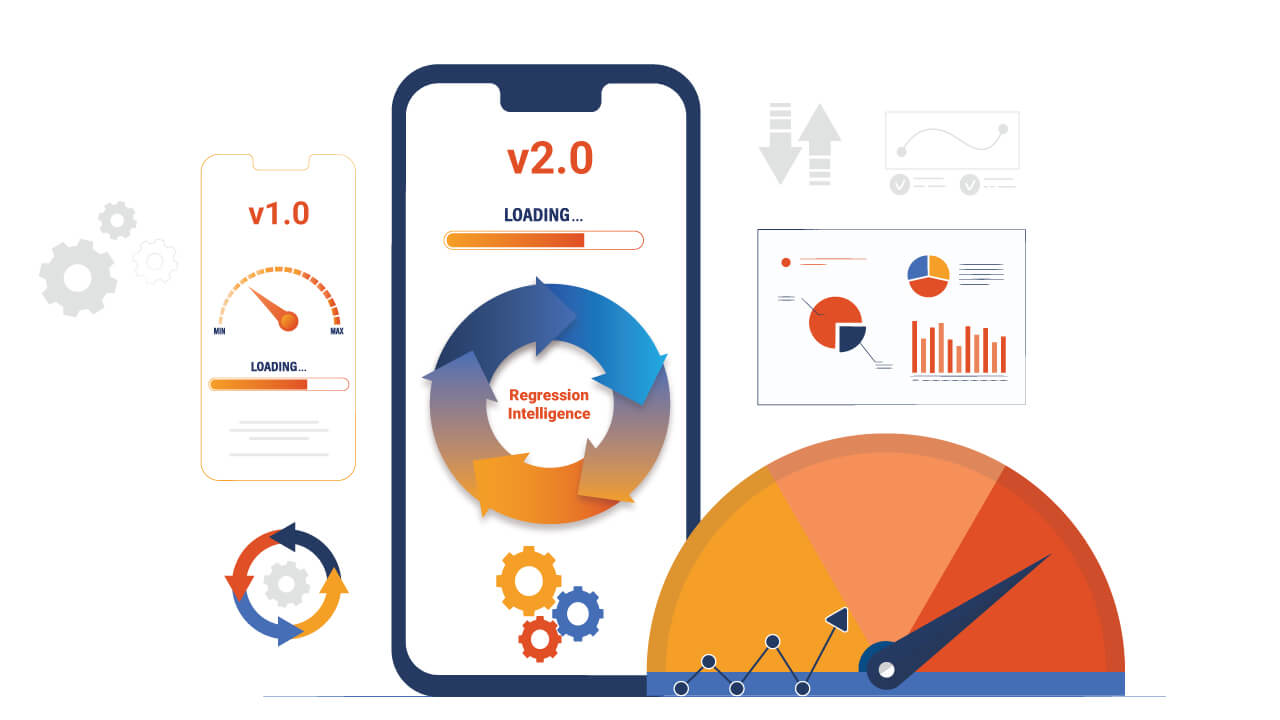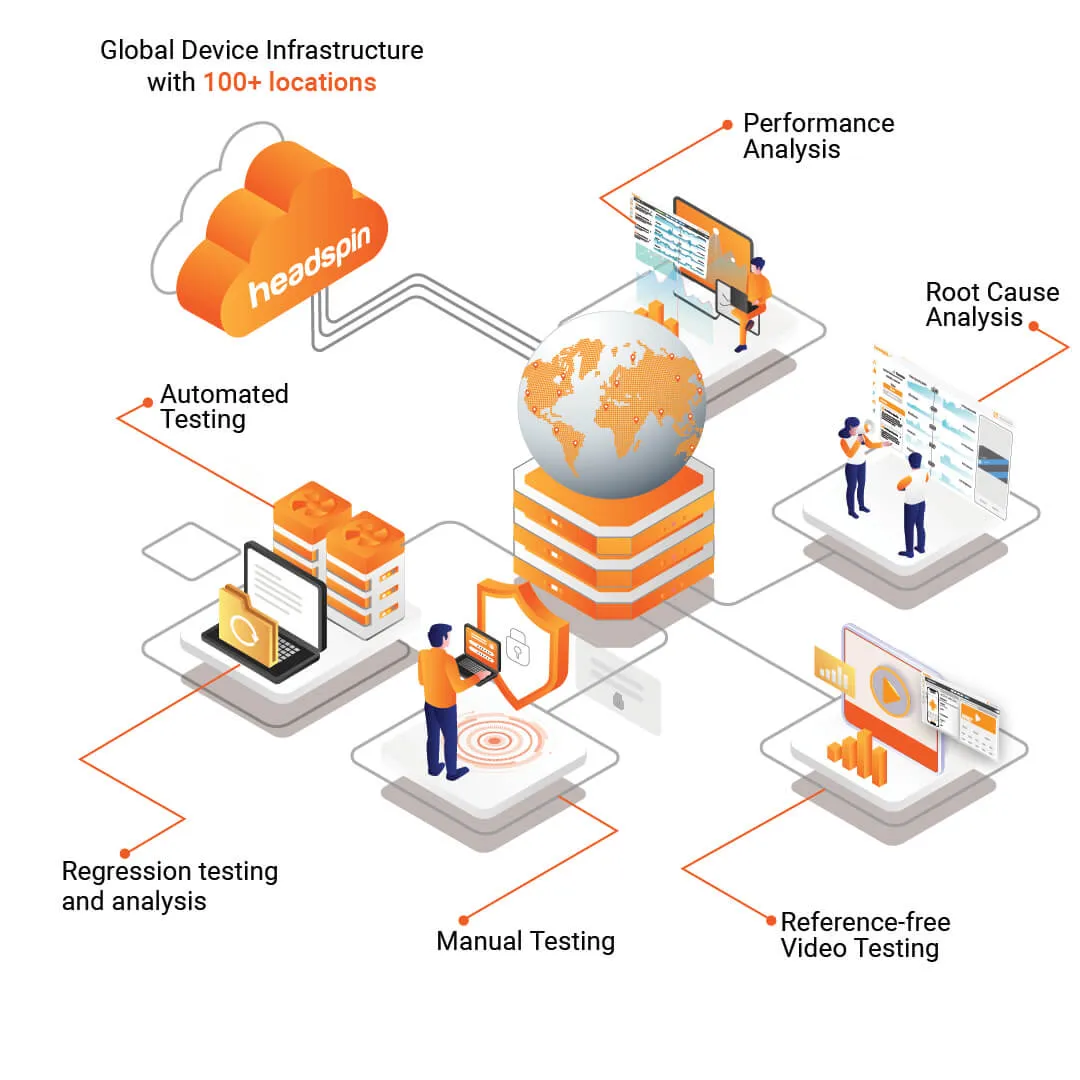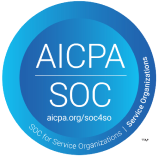One of the primary reasons for software failure is the inefficient and poor quality assurance of software during the development process. Software is no longer limited to business processes but is now embedded within physical products. Hence, quality software is critical to success in today’s digital world.
The impact of poor quality software on the US economy is estimated to be approximately $2.08 trillion. It includes unsuccessful IT/ software projects, poor software quality in legacy systems, and operational software failures. Besides the monetary loss, software failures can negatively impact the brand.
With rapid technological innovation, software development methodologies, including testing, must evolve to meet emerging requirements. The frequency of software updates has also increased, necessitating efficient and effective software testing.
Enable distributed and crowdsourced testing with secure low-latency access to your remote devices. Learn more.
Software quality management is an integrated approach to ensuring the quality of software. It covers three aspects: software quality assurance, quality control, and testing. Software testing is a broad term; however, you can apply some best practices to create bug-free products.
What is QA Testing?
QA Testing (Quality Assurance Testing) is the process of evaluating software to ensure it meets functional, performance, and user expectations before release. It involves writing and executing test cases, identifying bugs, validating fixes, and checking that the product behaves as intended across different scenarios. QA testing helps prevent defects, ensures stability, and maintains product quality throughout the development cycle, making it a critical part of delivering reliable and user-friendly software.
11 Tips for Software Quality Assurance
Here are 11 ways in which software testing automation can help a company improve the quality assurance of its softwares.
1. Prepare a test plan
‘A good beginning is half the battle won.’
It means that half the work is complete when there is a good start to it. Effective test planning entails documentation of test plans and processes for a project.
Read: Designing an Automated Functional Testing Strategy
Software quality management includes different document types supporting quality assurance (QA) processes. A quality management plan, test policy, test strategy, test plan, and test cases are various quality documents that specify objectives and methods that a company can follow to achieve overall good product quality.
2. Report bugs on time
Efficient software testing requires reporting bugs quickly after recognizing them. A good report is essential to enable developers to understand the problem and find a timely solution to prevent cascading effects of the bugs.
A bug report is an efficient means of communication between a quality assurance engineer and developers. A bug report should include step-by-step instructions to reproduce a bug and all relevant information to avoid confusion. It should also consist of screenshots highlighting the defects for greater clarity.
Also read: Saving Test Data to Make Debugging Easier
3. Test automation for efficient processes
Software testing automation helps improve testing efficiency by automating repetitive manual tasks and quickly identifying bugs.
It improves test coverage, reduces human error, and optimizes software testing budgets. Regression testing, data-driven testing, testing of complex functionalities, performance testing, and smoke testing are feasible tests for automation.
One cannot automate all tests, and according to a study, test automation services account for approximately 50% of testing in companies.
A company can utilize software testing automation in agile workflows and DevOps methodologies, incorporating continuous integration and delivery practices. The organization needs to select appropriate QA Automation tools to enable it to automate software testing.
4. Invest in software testing tools
The demand for software testing automation continues to increase with the higher adoption of Agile and DevOps methodologies. Therefore, a company should invest in software testing tools that are more reliable than manual testing to identify bugs.
The testing tool complements the QA personnel’s testing efforts and helps the developers improve productivity and accuracy. Some top testing tools include Selenium WebDriver, Appium, and JUnit, among others.
5. Implement exploratory testing
Exploratory testing is a product assessment process without predetermined test cases to gauge the product’s performance in real-world conditions.
The technique requires an experienced team, since the test cases are designed and executed instantaneously. The test results are analyzed to identify bugs and take corrective actions immediately.
Exploratory testing is crucial as it involves real-life scenarios from user perspectives.
Accelerate Appium test cycles with the HeadSpin, a solution for mobile app automation. Know more.
6. Build a structured testing organization
Software testing involves different activities requiring varied skill sets. The different roles are specified at the planning stage in a testing plan for seamless execution. Software test engineers, test automation engineers, test analysts, test architects, and test managers are the expected roles within software quality assurance.
A test analyst identifies test conditions and features to test, a software test engineer tests the overall system using appropriate methodology, and a test automation engineer develops a script for automated tests.
Also Read: Things Every CEO Must Know About Testing
7. Use shift-left approach for an early start and frequent testing
DevOps methodology with continuous integration and delivery (CI/CD) pipelines has accelerated software development and business innovation. Software testing also needs to evolve to keep pace, which means testing needs to start early and perform continuously.
A shift-left testing approach means testing is broken down into small parts and is done from the beginning of the development process rather than in the end as in the traditional model.
Testing activities match the development cycle in frequency throughout the development stages. It also requires test data design and provisioning to keep up with the fast pace of simultaneous development and testing.
Check out: 10 Ways to Accelerate the Software Testing Cycle
8. Conduct formal technical reviews
A formal technical review is a software quality control activity performed by QA and development teams to detect errors in logic, function, or any other software segment.
The objective is to ensure that the company builds the software to meet specific requirements and match predetermined standards.
You can schedule FTR when your product is in the final development and testing stages.
9. Documentation and reporting of tests
Documentation helps maintain testing records that testing personnel can refer to in the future.
Your QA team should religiously record testing plans, bug fixes, and general observations to help software test engineers and developers to keep track of the progress and remain updated with the latest information.
Also check: Designing An Automated Functional Testing Strategy
10. Perform user acceptance testing
User acceptance testing (UAT) is performed at the end of the product development by actual users before the QA personnel move the software system to the production environment.
The team conducts UAT to ensure the software systems or product performs as expected in real-world situations with the intended user base. It ensures that the product meets both technical and business specifications.
11. Leverage test management tools for standardization
A test management tool helps QA teams manage software testing end-to-end. It helps to manage test case environments, automated tests, and bugs.
The test management tool helps the team standardize the processes across various tools and improve reusability across the projects.
Accelerate Appium test cycles with HeadSpin, a solution for automating mobile app testing. Know more.
Conclusion
A high-quality product and exceptional customer service are essential to remaining competitive in today’s digital world. With technology ingrained in products and services, you should have an efficient software testing strategy and an effective execution plan to roll out quality products and maintain your competitive edge.
FAQs
1. What do you mean by entry and exit criteria in STLC?
Software testing life cycle phases involve both entry and exit criteria. The entry criteria include the conditions that must be addressed prior to performing the test. These criteria are related closely to the purpose of the test. Exit criteria, on the other hand, refers to the conditions that must be considered prior to the completion of tests.
2. What is a bug life cycle in software testing?
Bug life cycle or defect life cycle refers to the specific set of states that the defects or bugs go through in their entire life. The bug life cycle helps to coordinate and communicate the current status of defects that changes to different assignees, making the defect fixing process systematic and efficient.
3. What are the key document types in Software Quality Assurance?
The primary types of documents in software quality assurance are:
- Requirement document - The major functionalities that are to be added to the application are documented in terms of requirements, and this document is called the requirement document.
- Test metrics - This refers to a quantitative measure that determines the quality and effectiveness of the testing process
- Test plan - This defines the strategy that will be applied to the test application, the resources which will be used, the test environment where testing will be executed, and the scheduling of test activities will be done.
- Test case - This refers to a set of steps and conditions used at the time of testing to verify if the functionalities of the software are working properly.



























.png)













.jpg)





-1280X720-Final-2.jpg)






